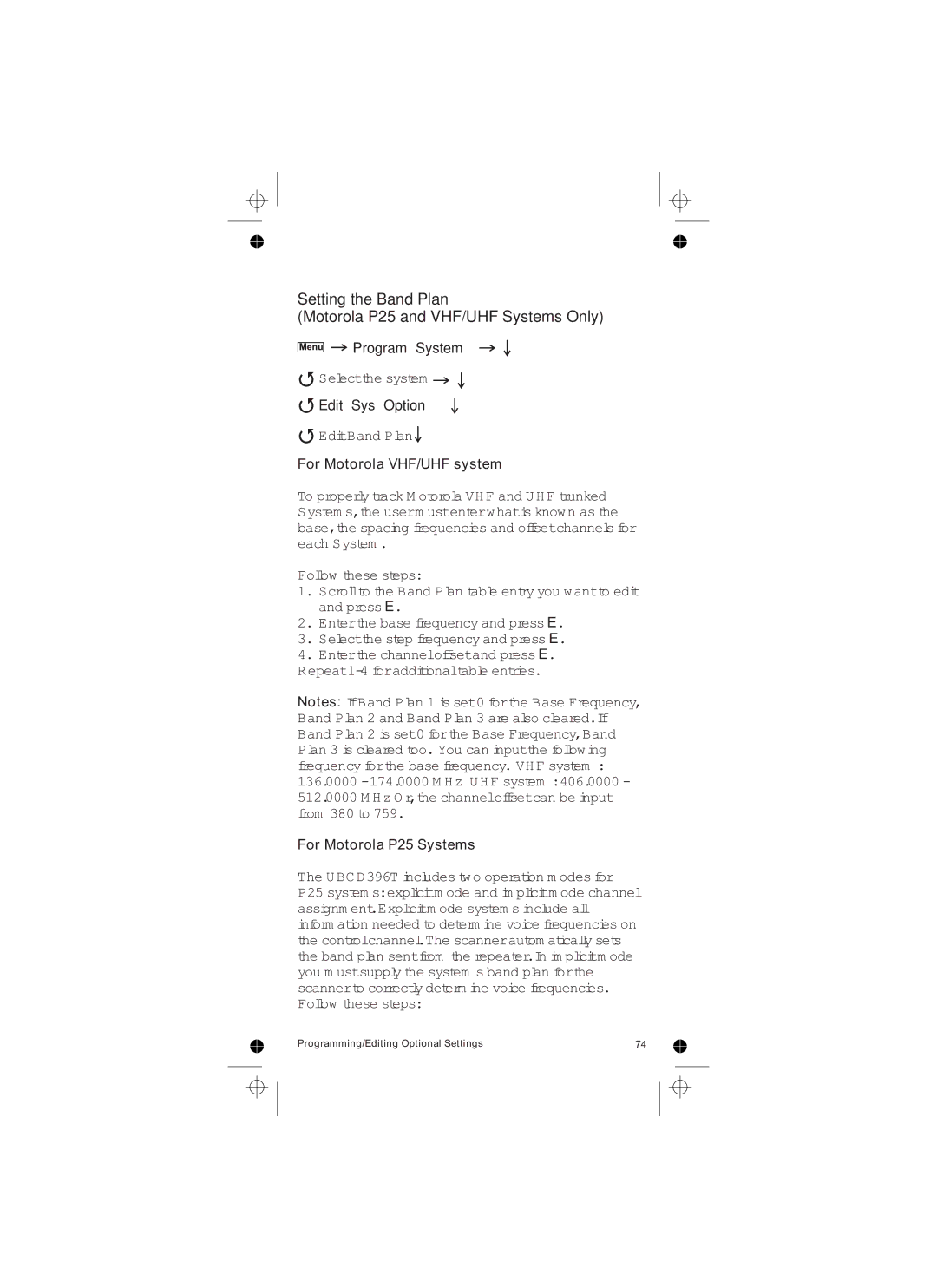UBCD396T specifications
The Uniden UBCD396T is a highly versatile and compact digital scanner that has gained a reputation among enthusiasts and professionals alike for its impressive features and capabilities. Designed primarily for public safety scanning, this portable scanner allows users to stay informed about local emergency services, including police, fire, and medical operations.One of the key features of the UBCD396T is its ability to receive a wide range of frequencies. It covers VHF, UHF, and 700/800 MHz bands, which are commonly used by various agencies. With support for both analog and digital modes, users can enjoy clear audio and access to multiple communication protocols.
The scanner is equipped with Uniden's advanced APCO-25 digital decoding technology, enabling it to receive and accurately decode P25 digital signals. This is particularly beneficial for users in areas where digital trunking systems are in use, ensuring they can access critical communications without the hassle of missing important information.
A standout characteristic of the UBCD396T is its Dynamic Memory Management system, which allows users to create and manage multiple scanning banks efficiently. With 1000 channels and the ability to store additional frequencies, users can customize their scanning experience based on their preferences and needs. The scanner also supports GPS connectivity, enabling location-based scanning that automatically alters the frequency range based on the user's position.
Another notable feature is the scanner's customizable display and backlight options. Users can adjust the brightness and color settings to suit their preferences, making it easy to operate even in low-light conditions. The UBCD396T also boasts a built-in rechargeable battery, providing hours of continuous operation, ideal for users on the go.
Furthermore, the UBCD396T includes features such as a dedicated search mode, allowing users to scan unprogrammed frequencies, and a close call function that detects nearby transmissions instantly. The USB connectivity enables easy software updates, ensuring users can keep their devices up to date with the latest technologies.
In summary, the Uniden UBCD396T is a powerful and flexible digital scanner that offers a suite of features suited for both casual users and serious enthusiasts. Its ability to decode various communication types, along with user-friendly customization options, makes it a standout choice for anyone looking to stay connected to the world around them.

